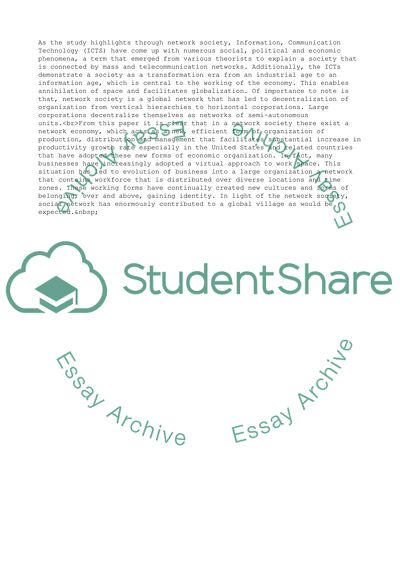Cite this document
(“Network Society Essay Example | Topics and Well Written Essays - 3000 words - 2”, n.d.)
Network Society Essay Example | Topics and Well Written Essays - 3000 words - 2. Retrieved from https://studentshare.org/management/1620402-what-do-you-understand-by-the-network-society-how-has-the-network-society-changed-the-ways-in-which-we-work-and-interact-explain-this-through-a-relevant-case-study
Network Society Essay Example | Topics and Well Written Essays - 3000 words - 2. Retrieved from https://studentshare.org/management/1620402-what-do-you-understand-by-the-network-society-how-has-the-network-society-changed-the-ways-in-which-we-work-and-interact-explain-this-through-a-relevant-case-study
(Network Society Essay Example | Topics and Well Written Essays - 3000 Words - 2)
Network Society Essay Example | Topics and Well Written Essays - 3000 Words - 2. https://studentshare.org/management/1620402-what-do-you-understand-by-the-network-society-how-has-the-network-society-changed-the-ways-in-which-we-work-and-interact-explain-this-through-a-relevant-case-study.
Network Society Essay Example | Topics and Well Written Essays - 3000 Words - 2. https://studentshare.org/management/1620402-what-do-you-understand-by-the-network-society-how-has-the-network-society-changed-the-ways-in-which-we-work-and-interact-explain-this-through-a-relevant-case-study.
“Network Society Essay Example | Topics and Well Written Essays - 3000 Words - 2”, n.d. https://studentshare.org/management/1620402-what-do-you-understand-by-the-network-society-how-has-the-network-society-changed-the-ways-in-which-we-work-and-interact-explain-this-through-a-relevant-case-study.


